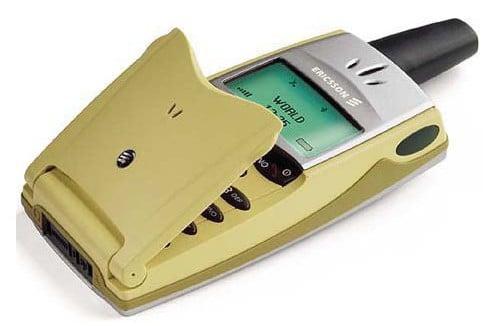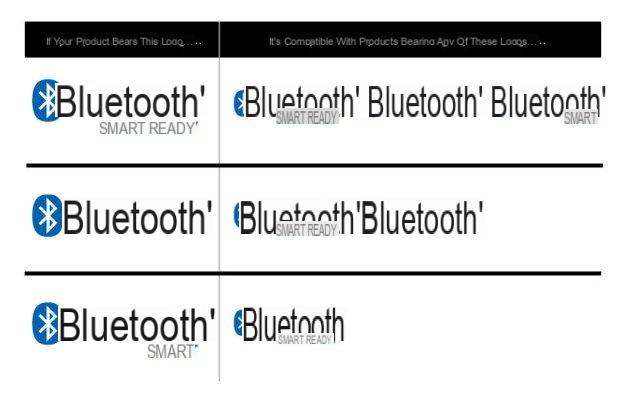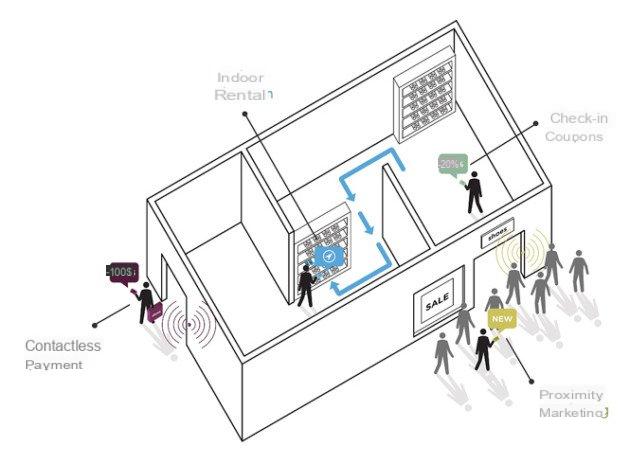Bluetooth is a wireless technology that everyone is familiar with. It has been around for many years and had its earliest glory days in the days of Bluetooth headsets. Technology has come back to the fore with the myriad of connected objects that have emerged in recent years. If at the beginning, we were limited to connected bracelets, watches quickly appeared with new needs in bandwidth, but also in terms of autonomy. The standard has therefore gradually adapted to new uses. A brief overview of the different Bluetooth standards and their interest for the consumer.

Bluetooth and Wi-Fi use the same frequency band, that of 2,4 GHz. The comparison stops there since Bluetooth and Wi-Fi do not meet the same uses at all. Wi-Fi is much more efficient, but more energy-intensive and more complex and therefore more expensive. On the contrary, Bluetooth has a lower bandwidth and is more used to transmit light data.
Bluetooth first saw the light of day 20 years ago in Ericsson's Swedish laboratories. For the record, the term Bluetooth refers to the Danish king Harald Blåtand who had succeeded in unifying the Viking kingdoms (Sweden, Denmark and Norway). The link with new technologies? The engineers who created Bluetooth are Swedish and have succeeded in unify communications between phones and other devices (headsets, computer, personal assistant, etc.) using a common protocol. The name was all found. The Bluetooth Special Interest Group (SIG), which brings together many manufacturers, then formalized the specifications of the standard.
From Bluetooth 1.0 to 3.0: increased speeds

Ericson T39
On May 20, 1998, the Bluetooth Special Interest Group announced the specifications for the Bluetooth 1.0 standard. Less than two months later, Spain became world football champions and in December 1999, version 1.0B of the standard saw the light of day. Ericsson's T39, the first Bluetooth phone, officially supported the 1.0B standard, but in fact, the future version 1.1 was in the game. Compared to version 1.0B, Bluetooth 1.1 fixed many bugs.
Version 1.2 of the standard brings many new features, starting with the speed. While in theory it is still limited to 721 kbps, in practice the bit rate is higher than version 1.1. The reason: higher resistance to interference (microwave, Wi-Fi, etc.) thanks to frequencies that adapt to the environment.
2004 in the Bluetooth 2.0 + EDR (for Enhanced Data Rate) is born. EDR is optional (hence the use of the plus sign) and it is therefore possible to find Bluetooth 2.0 devices that do not support EDR. Yet the EDR is one of the biggest new features of the new version. The EDR makes it possible to increase the speeds to 2,1 Mbps to transmit information in a reduced time, which saves the battery. the Bluetooth 2.1 + EDR for its part brings some improvements such as easier and more secure pairing: the SSP for Secure Simple Pairing.
In 2009, the Bluetooth SIG released a fairly revolutionary version. The version 3.0 + HS (for High Speed) now uses a standard Bluetooth connection for pairing, but an 802.11 connection (like Wi-Fi) for data transfer. The bandwidth then rises to 24 Mbps. Just like EDR, the devices can support Bluetooth 3.0 without HS, thus preventing them from enjoying the higher speed.
Finally, note that each version of the standard from Bluetooh 1.0 to Bluetooth 3.0 is backward compatible. If your smartphone has a Bluetooth 3.0 chip, it will be able to work with a Bluetooth 1.0 device. On the other hand, a device such as a bracelet using Blueetooth 3.0 will not necessarily work with a Bluetooth 2.0 phone. It will depend on the features used. For Bluetooth 4.0, it's more complicated and we'll see that just below.
Bluetooth 4.0 and 5: the rise of low-consumption connected objects
Bluetooth 4.0
The Bluetooth 4.0 standard is a small revolution, since it splits the standard into two branches. It incorporates on the one hand the Classic Bluetooth standards (from versions 1.0 to 3.0), High Speed (from version 3.0) and on the other hand the new Bluetooth low energy (LE) standard..
The real novelty therefore comes from the Bluetooth LE which greatly reduces the consumption of the Bluetooth chip with a really different protocol. Manufacturers can decide to implement Bluetooth Low Energy alone (single mode) or with Classic Bluetooth (dual mode) to maintain compatibility with older versions of Bluetooth. It is Bluetooth LE that has enabled the strong growth of connected objects since the consumption it generates is extremely low. Likewise, the latency for connection and data transfer is reduced. The downside is a speed that is lower than the first version of Bluetooth, but connected objects such as watches or bracelets do not require a very high bandwidth.

Bluetooth Smart logos correspondence table
Bluetooth 4.1
In December 2013, the version Bluetooth 4.1 is released. It places even more emphasis on connected objects. This is a minor update, but one that should bring more comfort of use. For example, 4G and Bluetooth can communicate with each other to synchronize certain actions. The improvements also concern flow rates and therefore consumption since the less a device is active, the less energy it will consume. Especially the Bluetooth 4.1 will allow the same device to have several roles. For example, a connected watch could be linked to a heart sensor to receive information, but also to a smartphone to send and receive information.
For backward compatibility with lower standards, there are two cases. If the device (connected watch or other) uses Bluetooth Low Energy (Bluetooth Smart), it will only work with a smartphone compatible with Bluetooth 4.0 LE (Bluetooth Smart Ready). If the device uses Bluetooth Classic (short for Bluetooth), it can then work with certain earlier versions of the standard, taking into account the need to operate in EDR or HS.
Bluetooth 4.2
Launched in December 2014, the Bluetooth 4.2 effectively provides support for IPv6 and 6LOWPAN protocols to Bluetooth Smart devices, i.e. connected objects using the Bluetooth Low Energy (BLE) low consumption profile.
The new specifications also inaugurate two new profiles. The Internet Protocol Support Profile (IPSP), which allows objects to connect more directly and independently to the Internet. The telephone would only serve as a router, as a gateway between the object and the Internet, whereas until now it had a much more decisive active role. The specification also inaugurates a multitude of Generic Attribute Profiles (GATT), which standardize the way in which all kinds of sensors communicate (heart rate monitor, bathroom scales, thermometer, etc.).
Bluetooth 5
Bluetooth 4.2 is not succeeded by Bluetooth 4.3, nor even Bluetooth 5.0, but the Bluetooth 5, ratified in early 2017. If the numbering suggests that this is a revolution, it is in fact only an iterative update. The Bluetooth SIG in turn adopts this trend, initiated by Google with Chrome, which consists of only using whole numbers.
The Bluetooth 5 is despite everything a major update which, to begin with, doubles the range and quadruple the speed of Bluetooth Low Energy transmissions, which opens the way, among other things, to lossless music distribution.
In addition, since the advent of Bluetooth Low Energy, Bluetooth has been used in retail at advertising purposes. Shops install beacons that detect phones, track their movements and stops. Customers with the merchant app can thus receive promotions or targeted advertisements. And with this in mind, Bluetooth 5 allows beacons to broadcast a set of information "eight times richer".

Example of use of Bluetooth in store
The role of profiles
To connect with each other, Bluetooth devices use profiles. The profiles contain information on the data to be transmitted and the operating mode of the device. For example, the famous Bluetooth headsets all use the HSP (Headset Profile) profile which imposes the audio quality (64 kbps), but also the operation of the buttons to pick up or adjust the volume. The profiles therefore make it possible to release products that will necessarily be compatible with all Bluetooth chips, without having to download special software on their phone..
With Bluetooth Low Energy, the operating mode of the profiles has changed a bit. It is now much easier to create a profile and implement it. However, you always have to go through the Bluetooh SIG to have it validated, but it would seem that it takes much less time. And this is a good thing, because manufacturers cannot always predict certain uses and it therefore saves time for both consumers and manufacturers. This novelty contributes to the effort to unify the various objects connected to each other. Bluetooth is therefore looking to the future and it is a good idea to be able to make rapid progress in the field of connected objects.
The interest of Bluetooth and connected objects
As we have just seen, Bluetooth has evolved in order to stick to new uses. According to all experts, the connected objects market should explode by 2020. Connected refrigerators, connected watches, connected toothbrush, everything is possible. The devices that communicate with our smartphones already exist and the human imagination should succeed in creating new uses. According to Cisco, by 2020, it should sell 50 billion connected objects. Do we really need it? Not really, no. Just like we didn't need a smartphone a few years ago. But you quickly get used to being able to book train tickets directly on your phone or use them as a GPS to go on vacation, so why not for connected objects?

Connected objects are not essential, but will become very useful on a daily basis. Are you at the supermarket and can't remember if you have any eggs left in the fridge? It will suffice to question him from a distance. It suddenly starts to rain and your windows are wide open? Do you love receiving statistics about your life? Want to have a nice 3D curve representing your oral hygiene? Connected objects could well become your best friends. For the others, connected objects should not become a necessity in the medium term and some even see them as enemies.
Of course, connected objects do not only have advantages. Sincethey use operating system and wireless connection, it is possible to hack them. There is therefore a risk for the security of personal data and intrusion into privacy. The Bluetooth protocol may be secure, but hackers can easily hack it to access data on a connected object. There is also the risk of breakdown higher since the devices will carry more electronics with less easily repairable parts. Finally, concerning the harmfulness of Bluetooth to health, we may wonder, even if the transmission power is much lower than that of Wi-Fi.
For connected objects, Bluetooth is essential. It allows information to be transmitted between several devices without excessive data consumption and above all with almost perfect interoperability. Bluetooth has not finished talking about it.


























